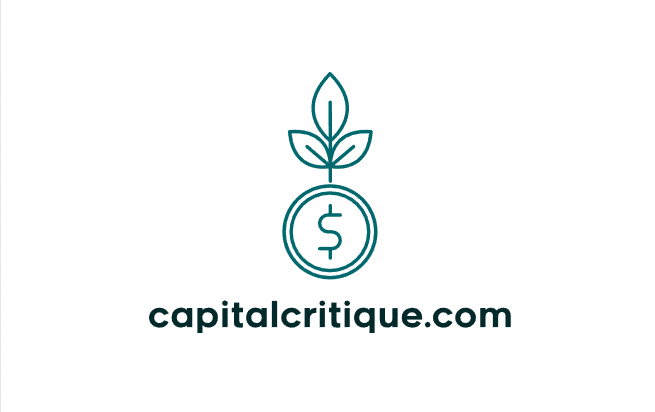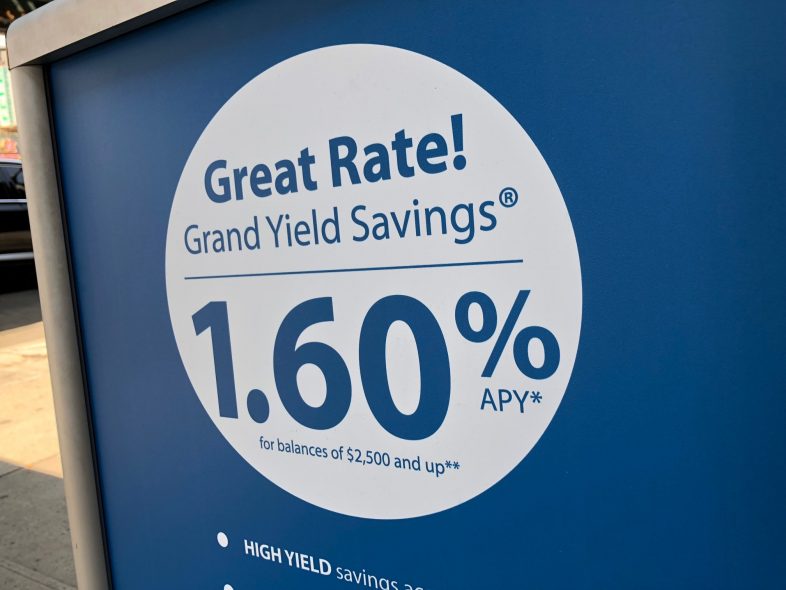In today’s economic climate, where traditional savings accounts offer meager interest rates, finding the best interest rates for saving accounts has become crucial for individuals seeking to grow their wealth. Saving money is a cornerstone of financial stability, but where you save it can significantly impact your long-term financial goals. This comprehensive guide aims to shed light on the importance of interest rates, factors to consider when choosing a saving account, a comparison of top saving accounts, and tips for maximizing your savings potential.
Table of Contents
Why Interest Rates Matter
nterest rates are the cornerstone of saving accounts, dictating how much your money grows while it’s safely stashed away. Even slight differences in interest rates can lead to significant variations in the final savings amount over time. For example, depositing $10,000 in an account with a 0.05% interest rate will yield a mere $5 in interest over a year. However, opting for an account with a 1% interest rate will generate $100 in earnings – a substantial difference.
Factors to Consider When Choosing a Saving Account
Interest Rates: The primary consideration should be the interest rate offered by the saving account. Higher interest rates translate to greater earnings on your savings.
Fees and Charges: Watch out for accounts with excessive fees, such as monthly maintenance fees or transaction fees. Look for accounts with minimal fees to ensure maximum savings.
Accessibility: Consider the ease of accessing your funds. Opt for accounts offering online banking, mobile apps, and ATM access for convenient transactions.
FDIC Insurance: Prioritize accounts insured by the Federal Deposit Insurance Corporation (FDIC) to protect your savings against bank failures.
Minimum Balance Requirements: Some accounts require a minimum balance to earn interest. Ensure the minimum balance aligns with your financial situation and savings goals.
What do the best savings accounts have in common?
When it comes to selecting the best savings accounts, there are several key factors to consider. Here’s what you need to know about the best savings accounts and what they commonly offer:
Competitive Interest Rates: The best savings accounts typically offer competitive interest rates that help your money grow over time. Higher interest rates mean more significant returns on your savings, so it’s essential to compare rates from different banks to find the best option.
Low or No Fees: Many of the top savings accounts have minimal fees, if any at all. Look for accounts with no monthly maintenance fees, low transaction fees, and no minimum balance requirements to ensure you’re not losing money on unnecessary charges.
Accessibility: The best savings accounts offer convenient access to your funds when you need them. Look for accounts with online banking platforms, mobile apps, and ATM access so you can manage your savings easily from anywhere.
FDIC Insurance: It’s crucial to choose a savings account that is FDIC-insured. This insurance protects your deposits up to $250,000 per depositor, per insured bank, for each account ownership category in case the bank fails.
Flexibility: The best savings accounts offer flexibility to meet your financial needs. Whether you’re saving for short-term goals like a vacation or long-term goals like retirement, look for accounts that allow you to deposit and withdraw funds without restrictions.
Additional Features: Some savings accounts come with additional features like rewards programs, automatic savings plans, or linked checking accounts. Consider these extra perks when comparing accounts to find the best fit for your financial situation.
Overall, the best savings accounts prioritize competitive interest rates, low fees, accessibility, FDIC insurance, flexibility, and additional features to help you reach your savings goals efficiently. By comparing these factors across different accounts, you can choose the best option to meet your needs and maximize your savings potential.
Why should I care about the best savings account rates?
Caring about the best savings account rates is essential because it directly impacts the growth of your money over time. Here’s why you should pay attention to savings account rates:
Maximizing Returns: The interest rate on your savings account determines how much your money will grow over time. A higher interest rate means your savings will accumulate more quickly, allowing you to reach your financial goals faster.
Beating Inflation: Inflation erodes the purchasing power of your money over time. By earning a competitive interest rate on your savings, you can help offset the effects of inflation and ensure that your money maintains its value over time.
Achieving Financial Goals: Whether you’re saving for a down payment on a house, a dream vacation, or your retirement, earning a higher interest rate can help you reach your goals more efficiently. The more interest you earn on your savings, the faster you can achieve your objectives.
Making the Most of Your Money: Your savings represent your hard-earned income, and you want to make sure you’re making the most of it. By choosing a savings account with the best rates available, you can make your money work harder for you and optimize your financial well-being.
Staying Competitive: Banks and financial institutions frequently adjust their savings account rates based on market conditions and competition. By staying informed about the best rates available, you can ensure that you’re getting the most competitive return on your savings and not missing out on better opportunities elsewhere.
Overall, caring about the best savings account rates allows you to maximize your returns, beat inflation, achieve your financial goals faster, make the most of your money, and stay competitive in the ever-changing financial landscape.
Is my money safe in a savings account?
Yes, in general, your money is safe in a savings account, especially if it’s held at a reputable and federally insured bank or credit union. Here’s why savings accounts are considered safe:
Federal Deposit Insurance: In the United States, most savings accounts are insured by the Federal Deposit Insurance Corporation (FDIC) for banks or the National Credit Union Administration (NCUA) for credit unions. These federal agencies provide insurance coverage for up to $250,000 per depositor, per institution, ensuring that your money is protected in case the bank or credit union fails.
Regulated Institutions: Banks and credit unions are highly regulated financial institutions that must adhere to strict rules and standards set by federal and state regulatory agencies. These regulations govern various aspects of banking operations, including capital requirements, risk management, and consumer protection, to safeguard depositors’ funds.
Low Risk: Savings accounts are considered low-risk investments because they typically offer a fixed or variable interest rate on deposited funds without exposure to market fluctuations or investment risks associated with stocks, bonds, or mutual funds. While savings account returns may be modest compared to other investment options, they provide stability and liquidity for short-term financial needs.
Liquidity: One of the key benefits of a savings account is its liquidity, meaning you can easily access your funds when needed. Unlike some investment vehicles that impose penalties or restrictions for early withdrawals, savings accounts allow you to withdraw money at any time without facing significant consequences.
Peace of Mind: Knowing that your money is safe and accessible can provide peace of mind, especially during uncertain economic times or financial emergencies. Savings accounts serve as a reliable tool for preserving capital, building emergency funds, and achieving financial goals while minimizing risk.
While savings accounts offer safety and stability for your money, it’s essential to verify that your chosen bank or credit union is FDIC or NCUA insured and to review their terms and conditions, fees, and interest rates before opening an account. By doing so, you can ensure that your savings are protected and that you’re maximizing the benefits of your savings account.
How often do interest rates change?
Interest rates on savings accounts can change periodically, but the frequency of these changes depends on several factors, including the type of account, the financial institution’s policies, and prevailing economic conditions. Here are some factors that influence how often interest rates on savings accounts may change:
Economic Conditions: Interest rates are influenced by broader economic factors, such as inflation, economic growth, and monetary policy set by central banks. Changes in these economic indicators can prompt financial institutions to adjust their interest rates in response to market conditions.
Central Bank Policy: Central banks, such as the Federal Reserve in the United States, play a significant role in setting short-term interest rates and influencing overall monetary policy. Central banks may raise or lower interest rates to control inflation, stimulate economic growth, or stabilize financial markets. Changes in central bank policy can impact interest rates on savings accounts, albeit indirectly.
Competitive Landscape: Financial institutions may adjust their interest rates to remain competitive in the market and attract deposits from consumers. When one bank raises its interest rates, others may follow suit to retain customers or gain market share. Conversely, if competition decreases, banks may lower their rates accordingly.
Banking Regulations: Regulatory changes or updates, such as modifications to reserve requirements or capital adequacy standards, can influence banks’ cost of funds and their ability to offer competitive interest rates on savings accounts. Compliance with regulatory requirements may affect banks’ profitability and their willingness to adjust interest rates.
Account Type and Terms: The frequency of interest rate changes may vary based on the type of savings account and its terms. Some accounts offer fixed interest rates for a specific period, while others provide variable rates that can fluctuate more frequently based on market conditions. High-yield savings accounts or money market accounts may adjust rates more frequently to reflect changes in prevailing market rates.
Overall, while interest rates on savings accounts can change periodically, the exact timing and frequency of these changes are influenced by a combination of economic, regulatory, and competitive factors. It’s essential for savers to monitor interest rate movements and regularly review their accounts to ensure they’re earning a competitive rate of return on their savings.
Savings account terms you need to know
Understanding the terms associated with savings accounts is essential for effectively managing your finances and maximizing the benefits of your savings. Here are some key terms you should know:
Annual Percentage Yield (APY): The APY represents the total amount of interest earned on an account over one year, expressed as a percentage of the initial deposit. It takes into account the effects of compounding, making it a useful tool for comparing the true returns of different savings accounts.
Interest Rate: The interest rate is the percentage of the account balance that is paid out as interest over a specific period, usually annually. It determines how much interest your savings account will accrue over time.
Minimum Balance Requirement: Some savings accounts may require you to maintain a minimum balance to avoid fees or qualify for certain benefits, such as a higher interest rate. Be sure to understand the minimum balance requirement for your account to avoid penalties.
Monthly Maintenance Fee: Some banks charge a monthly maintenance fee for savings accounts, which can reduce your overall returns. Understanding the fee structure of your account and any conditions for waiving these fees is important for managing costs.
Compounding: Compounding refers to the process of earning interest on both the initial principal and the accumulated interest from previous periods. The more frequently interest is compounded, the faster your savings will grow.
Withdrawal Limitations: Savings accounts often have restrictions on the number of withdrawals or transfers you can make within a certain period, typically monthly. Exceeding these limits may result in fees or other penalties, so it’s essential to be aware of your account’s withdrawal limitations.
FDIC Insurance: The Federal Deposit Insurance Corporation (FDIC) insures deposits in banks and savings associations up to a certain limit per depositor, per insured bank. Understanding the FDIC insurance coverage for your savings account can provide peace of mind knowing that your funds are protected against bank failure.
Introductory or Promotional Rate: Some banks offer introductory or promotional interest rates for new savings accounts or account holders. These rates are often higher than standard rates but may only apply for a limited time before reverting to the regular rate.
Direct Deposit: Direct deposit allows you to electronically deposit funds into your savings account, such as paychecks or government benefits, without the need for paper checks. Many banks offer incentives or waive fees for accounts with direct deposit arrangements.
Online Banking: Online banking enables you to access and manage your savings account through the internet or mobile app, offering convenience and flexibility in monitoring your account activity, transferring funds, and setting up automated transactions.
Full list of editorial picks: best savings accounts
- American Express: 4.35% APY (annual percentage yield) as of 12/14/2023. Minimum to open = $0. Member FDIC.
- Barclays: 4.35% savings APY with no minimum to open account, Member FDIC.
- Bask Bank: 5.10% savings APY with no minimum to open account (read full review), Member FDIC.
- BMO Alto: 5.10% savings APY with no minimum to open account (read full review), funds insured by FDIC.
- Bread Savings: 5.15% savings APY with $100 minimum to open account, (read full review), Member FDIC.*
- CIT Bank: 5.05% savings APY with $100 minimum to open account (read full review), Member FDIC.
- Citibank: 4.45% savings APY with no minimum to open account (read full review), Member FDIC.
- Citizens: 4.50% savings APY with $0.01 minimum to open account (read full review), Member FDIC.
- Discover® Bank: 4.30% savings APY with no minimum to open account (read full review), Member FDIC.
- EverBank (formerly TIAA Bank): 5.15% savings APY with no minimum to open account (read full review), Member FDIC.
- First Foundation Bank: 4.90% savings APY with $1,000 minimum to open account (read full review), Member FDIC.
- LendingClub: 5.00% savings APY, $100 minimum to open account (read full review), Member FDIC.
- Marcus: 4.50% savings APY with no minimum to open account (read full review), Member FDIC.
- Quontic Bank: 4.50% savings APY with $100 minimum to open account (read full review), Member FDIC.
- Salem Five Direct: 5.01% savings APY with no minimum to open account (read full review), Member FDIC.
- Sallie Mae Bank: 4.50% savings APY with no minimum to open account (read full review), Member FDIC.
- SoFi: 4.60% savings APY (variable and subject to change) with no minimum to open account (read full review), Member FDIC.
- Synchrony Bank: 4.75% savings APY with no minimum to open account (read full review), Member FDIC.
- TAB Bank: 5.27% savings APY with no minimum to open account (read full review), Member FDIC.
- UFB Direct: 5.25% savings APY with no minimum to open account, Member FDIC.
- Upgrade: 5.07% APY, no minimum to open account (read full review), funds insured by FDIC.
- You want to invest elsewhere? Check our best low-risk investments or best investments in 2024
Conclusion
In conclusion, finding the best savings account for your needs involves considering several factors, including interest rates, fees, account features, and the financial stability of the bank. While high interest rates are attractive, it’s essential to ensure that the bank is reputable and offers the necessary services you require. By comparing the options available and understanding your financial goals, you can make an informed decision that will help you maximize your savings and achieve your objectives in the long run. Remember to regularly review your savings account to ensure that it continues to meet your needs and offers competitive rates and benefits.





